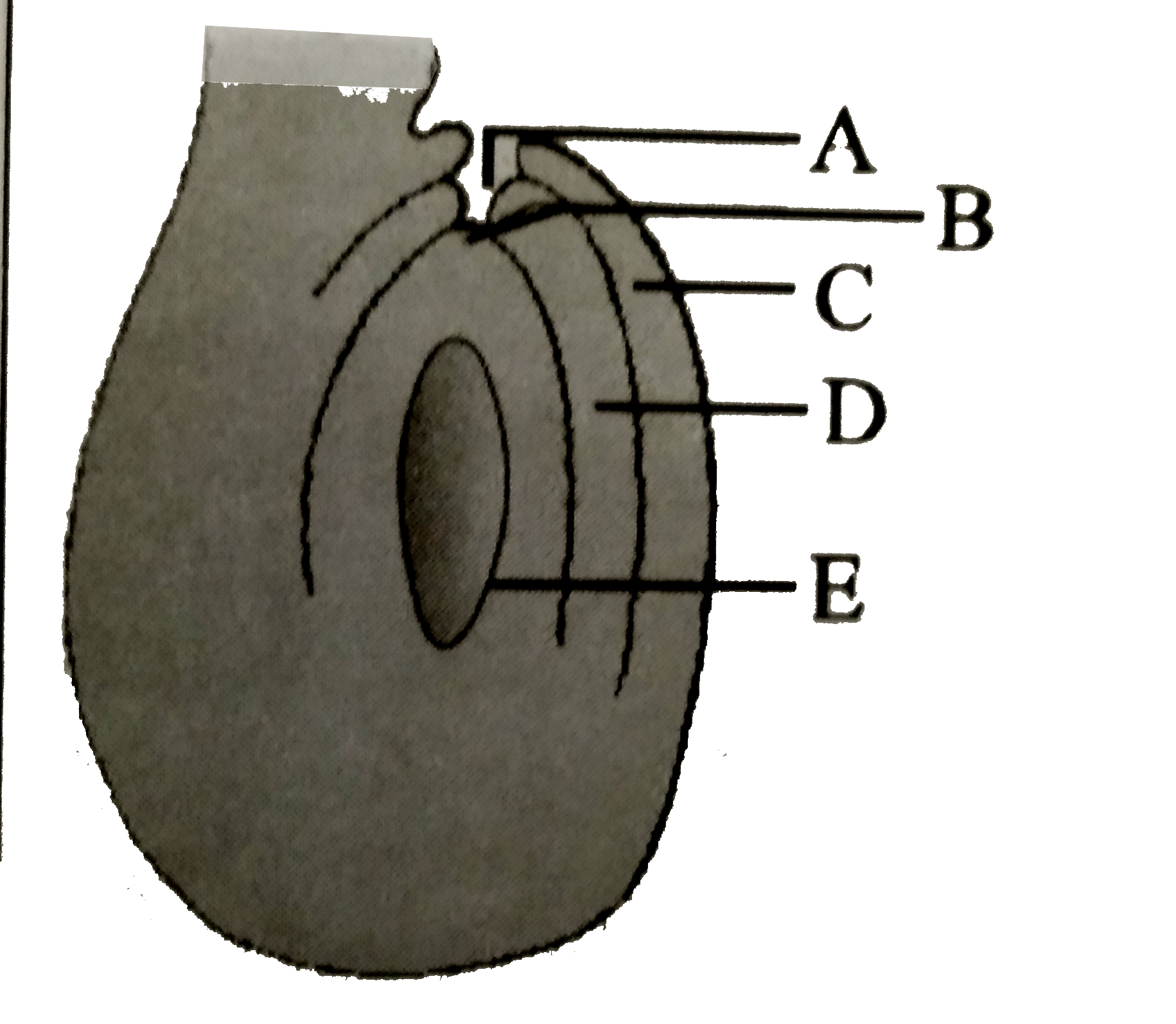
Identify A, B, C, D, E
The correct Answer is:A-Micropyle, B-Micropyler end C-Outer integument, D-Innerintegument, E-Embryosac
Step by step video, text & image solution for Identify A, B, C, D, E by Biology experts to help you in doubts & scoring excellent marks in Class 12 exams.
Similar Questions
Man is a vertebrate and a manual belonging to the animal kingdom. But, he stands unique and supreme and this supremacy in the living world is reflected in the organization of the brain. The brain is the central information processing organ and acts as the contrand and control system. The human brain is mainly divided into tluce parts - A, B, C. The part A consist of D, E and F. The part C comprises of G H and I. If B is located between A and C. Then identify A, B, C, D, E, F, G H and I respectively.
View SolutionThe endocrine glands present in head region are A, B in neck region are C, D and E is the endocrine' gland present in thorax region. Identify A, B, C, D and E.
View Solution
Knowledge Check
- Question 1 - Select One
The below diagram represents the human digestive system. Identify A, B, C, D and E
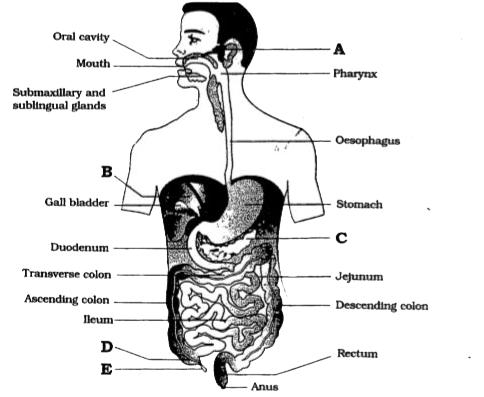 AA-Parotid gland, B-Liver, C-Pancreas, D - Caecum, E-Vermiform appendixBA-Parotid gland, B - Pancreas, C- Liver, D - Caecum, E-Vermiform appendixCA- Parotid gland, B - Caecum C-Pancreas, D-Liver, E-Vermiform appendixDA-Parotid gland, B - Liver, C- Caecum, D-Pancreas, E-Vermiform appendix
AA-Parotid gland, B-Liver, C-Pancreas, D - Caecum, E-Vermiform appendixBA-Parotid gland, B - Pancreas, C- Liver, D - Caecum, E-Vermiform appendixCA- Parotid gland, B - Caecum C-Pancreas, D-Liver, E-Vermiform appendixDA-Parotid gland, B - Liver, C- Caecum, D-Pancreas, E-Vermiform appendix - Question 2 - Select One
Identify the A, B, C, D and E in the following diagram
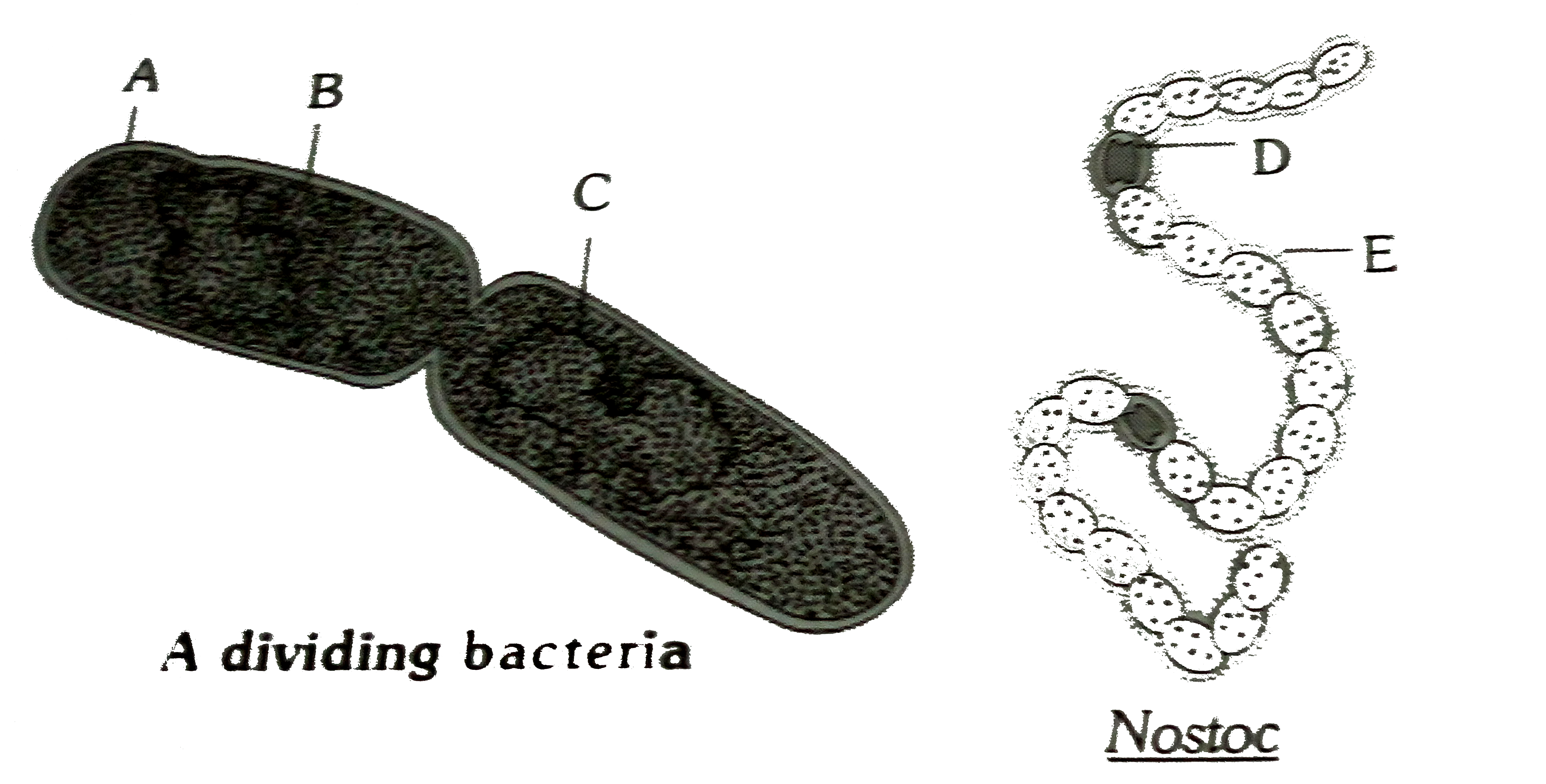 AA-Cell membrane, B-Cell wall, C-DNA, D- Heterocyst, E-Mucilagenous sheathBA- Mucilagenous sheath, B-Cell membrane, C- DNA, D- Heterocyst, E-Cell wallCA-Cell wall, B-Cell membrane, C-DNA, D-Heterocyst, E-Mucilagenous sheathDA-Cell wall, B-Cell membrane, C-Heterocyst, D-DNA, E-Mucilagenous sheath
AA-Cell membrane, B-Cell wall, C-DNA, D- Heterocyst, E-Mucilagenous sheathBA- Mucilagenous sheath, B-Cell membrane, C- DNA, D- Heterocyst, E-Cell wallCA-Cell wall, B-Cell membrane, C-DNA, D-Heterocyst, E-Mucilagenous sheathDA-Cell wall, B-Cell membrane, C-Heterocyst, D-DNA, E-Mucilagenous sheath - Question 3 - Select One
Study the given flow chart, and identify A, B, C, D and E.
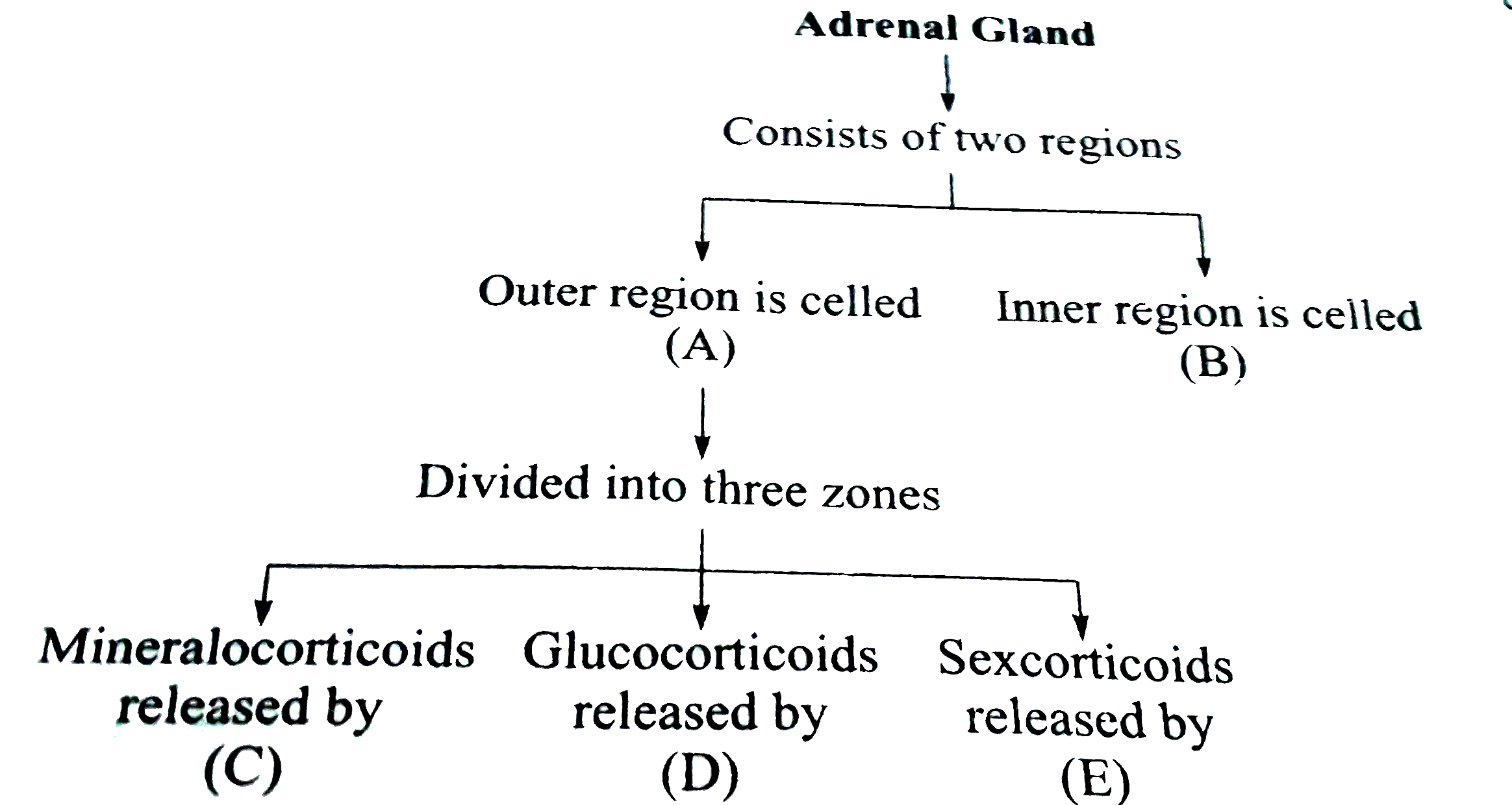 AA-Cortex, B- Medulla, C-Zona glomoerulosa, D- Zona reticulata, E-Zona fasciculataBA-Cortex, B- Medulla, C-Zona glomerulosa, D- Zona fasciculata, E-Zona reticulataCA-Medulla, B-Cortex , C-Zona glomoerulosa, D- Zona fasciculata , E-Zona reticulataDA-Medulla, B-Cortex , C-Zona glomoerulosa, D- Zona reticulata, E-Zona fasciculata
AA-Cortex, B- Medulla, C-Zona glomoerulosa, D- Zona reticulata, E-Zona fasciculataBA-Cortex, B- Medulla, C-Zona glomerulosa, D- Zona fasciculata, E-Zona reticulataCA-Medulla, B-Cortex , C-Zona glomoerulosa, D- Zona fasciculata , E-Zona reticulataDA-Medulla, B-Cortex , C-Zona glomoerulosa, D- Zona reticulata, E-Zona fasciculata
An organic compound A(C2H6O) reacts with sodium to form a compound B with the evolution of H2 and gives a yellow compound C when treated with iodine and NaOH. When heated with conc. H2SO4 at 413 K, it gives a compound D(C4H10O) which on treatment with cone. HI at 873 K gives E. D is also obtained when Bis heated with E. Identify A, B, C, D and E and write equations for the reactions involved.
View SolutionIdentify A, B, C, D and E in the following sequence of reactions.
 View Solution
View SolutionIdentify the A, B, C, D, E and F in the given diagram
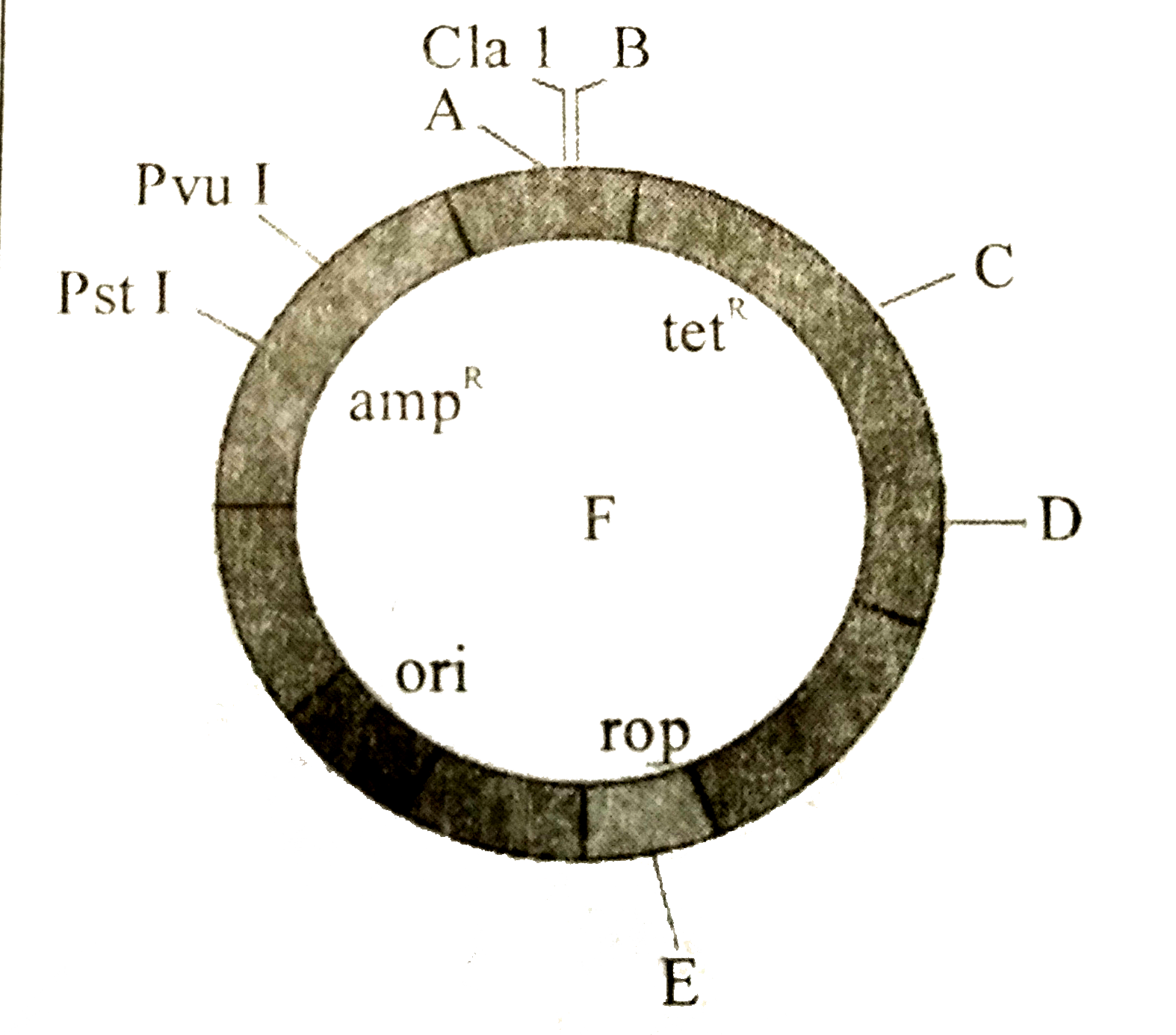 View Solution
View SolutionIdentify A, B, C, D and E in the given diagram of HIV virus.
 View Solution
View SolutionIn the given figure , identify A, B , C , D and E respectively.
 View Solution
View Solution

